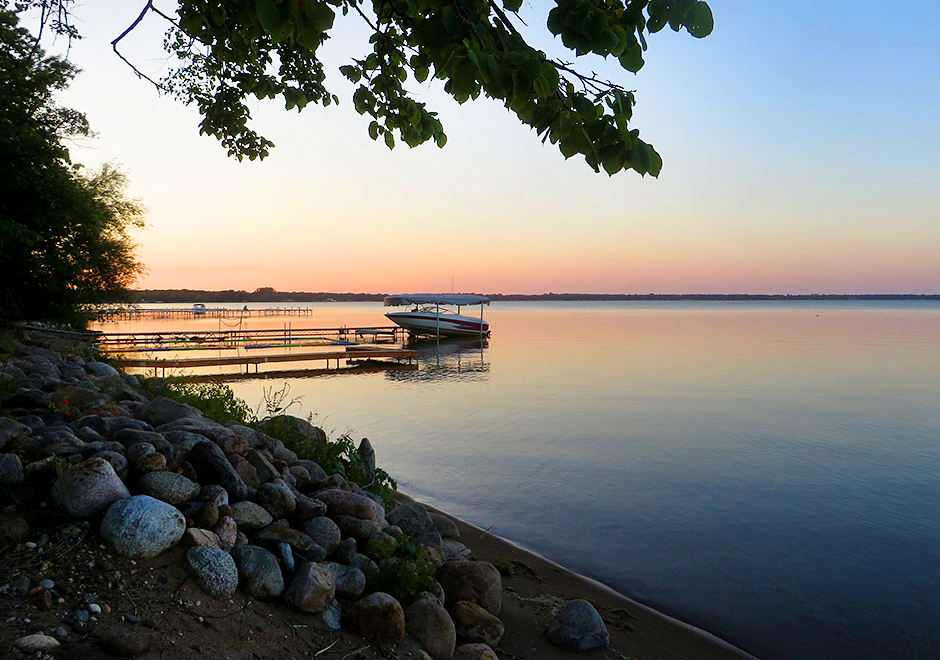The Lakeshore Dream: A Buyer's Guide to Otter Tail County
Otter Tail County, with its unmatched density of lakes, offers a vast and appealing market for lakefront property. Buying a lake place here is about more than just a home—it's about securing a lifetime of "Real North" experiences. To ensure your investment brings joy, not headaches, here are the essential considerations every buyer must think through when searching for their perfect lakeside retreat.
1. The Lake: Define Your Water Lifestyle:
With over a thousand lakes in the county, your first decision should be what kind of lake life you truly want. Not all lakes are created equal.
Recreational Focus (Trophy vs. Tranquil):
*High-Activity Lakes (e.g., Otter Tail Lake, Pelican Lake): Best for wakeboarding, tubing, jet skiing, sailing, and all-day cruising. These are typically larger and have more public access, meaning more boat traffic.
*Quiet Lakes (Often smaller or "Natural Environment" classified): Ideal for kayaking, fishing, loon watching, and peaceful relaxation. Gas-powered motors may be restricted or less common.
Shoreline and Water Quality:
*Shoreline Bottom: Are you looking for a sandy, hard-bottomed lakefront for swimming, or do you prefer a more natural, marshy area (which is better for fishing and wildlife)? Get in the water to feel the bottom composition.
*Water Clarity & Depth: Check the water clarity and how quickly the water deepens off the shore. The Minnesota DNR provides data on water quality and fish populations that you should research.
*Wind Direction and Muck: Notice the prevailing wind. Shorelines that face the wind may accumulate more floating weeds and muck.
Location and Accessibility:
*How close do you want to be to town? Consider the distance to amenities like Battle Lake, Perham, or Fergus Falls for groceries, medical care, and dining. If you plan on year-round use, check the road access and winter maintenance provided by the township or county.
2. The Property: Beyond the View
*The condition and unique characteristics of the property itself must be scrutinized with a critical eye, as they directly impact your future use and potential for renovation.
- Shoreline Elevation and Access: This is a major factor in lakefront value.
- Level Shoreline: Highly desirable for easy access to the water, especially for children or those with mobility concerns, but often commands the highest price.
- High Elevation/Bluff: Provides spectacular views but means a challenging walk (or the need for a tram/lift) to reach the water.
Sun Exposure and Views:
West-Facing: Ideal for evening sun and sunset views, but can mean faster algae growth and hotter afternoon sun on the deck.
East-Facing: Best for sunrise views and cooler, shady afternoons.
Property Boundaries and Easements:
*Lakefront property lines can be complex. Obtain a current survey. You must understand your boundaries, particularly concerning the water, as well as any shared driveways or utility easements that grant others the right to cross your property.
*Dock and Outbuildings: Inspect the condition of the dock system, boat lifts, and any boathouses. Replacing or repairing these structures can be a significant cost. Note: New boathouses are generally prohibited in Minnesota shoreland zones, making existing ones extremely valuable.
3. Regulatory and Structural Deep Dive
Minnesota, and specifically Otter Tail County, has stringent regulations designed to protect water quality. These will dictate what you can and cannot do with your property.
| Key Inspection | Action to Take | Why It Matters |
| Septic System | Require a Compliance Inspection. The seller must typically provide a Certificate of Compliance (COC) or a point-of-sale inspection from the county. | If the system fails inspection, replacement can cost tens of thousands of dollars and often requires a "mound" system due to proximity to the lake. |
| Well Water | Require a Water Quality Test. Test for coliform bacteria and nitrates. | Essential for ensuring safe drinking water, especially if the cabin has been seasonal. |
| Zoning & Setbacks | Verify Current Shoreland Zoning. Check with the Otter Tail County Land and Resource Management office. | Restrictive covenants and setback rules (the distance from the water you can build) may prevent future expansion or rebuilding plans. |
| Floodplain Status | Check FEMA Flood Maps and Water History. Ask your agent about historical high water levels on the specific lake. | Properties in a floodplain may require costly flood insurance, which must be factored into your budget. |
| Structure | Hire a General Home Inspector. Look for water damage, foundation issues, and proper insulation/plumbing if you intend to use it year-round. | Seasonal cabins may have insufficient insulation or plumbing for Minnesota winters. |
| Short-Term Rentals | Check Local Ordinances. If you plan to rent the property on platforms like Airbnb, confirm that the township or HOA allows short-term rentals, as restrictions are growing. | Not all areas allow short-term rentals. |
4. Working with a Waterfront Expert
Do not rely on a general residential agent. Find a real estate professional who specializes in the Otter Tail County lake market. They can:
- Help you navigate the unique legal and environmental disclosures.
- Accurately assess the value of the shoreline and the lake (the biggest drivers of price).
- Connect you with local inspectors, surveyors, and contractors who understand lake-specific challenges.
Buying a lake place in Otter Tail County is a significant emotional and financial step. Thorough research on the lake and due diligence on the property will ensure your dream cabin becomes a cherished family tradition.

